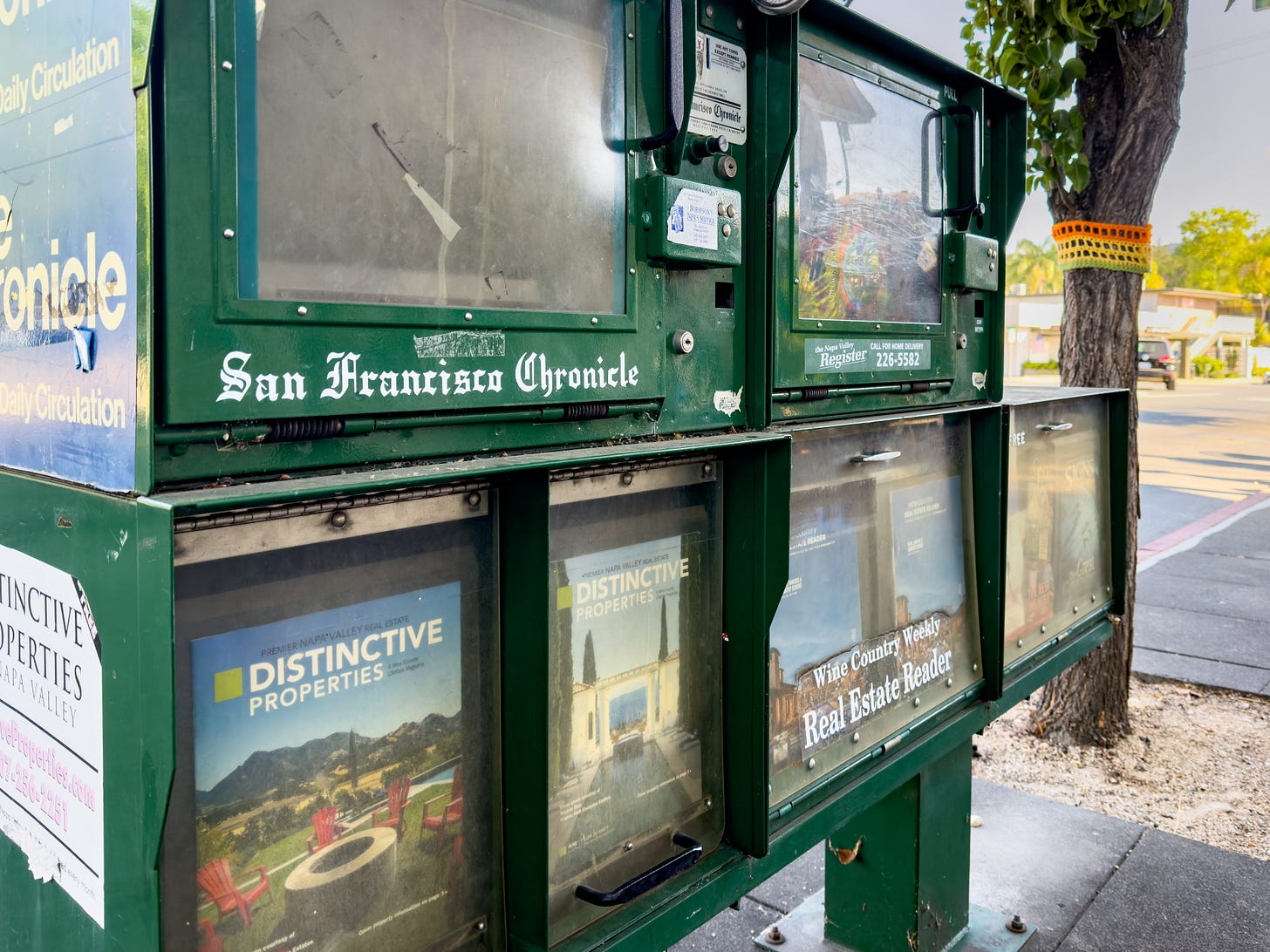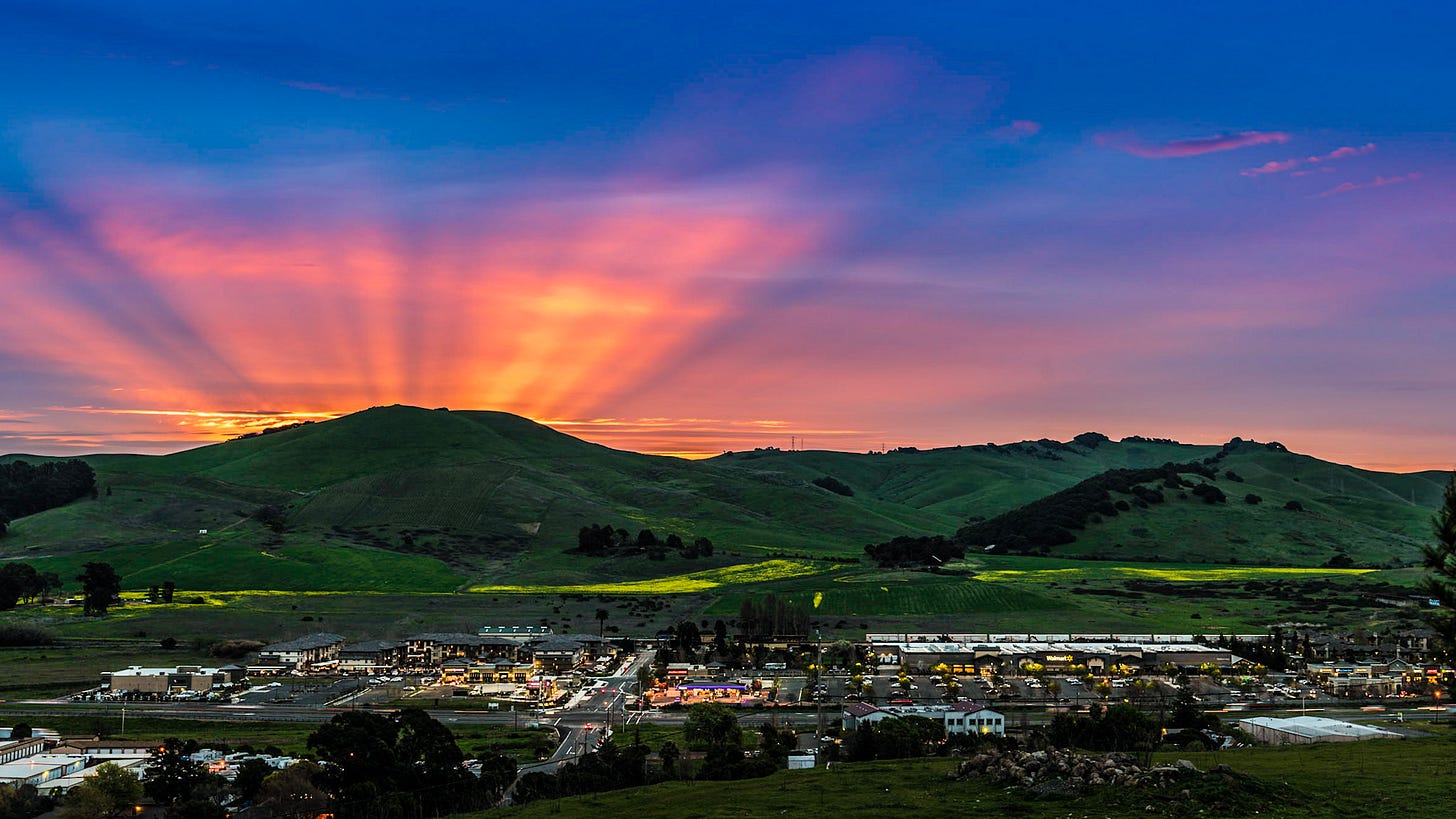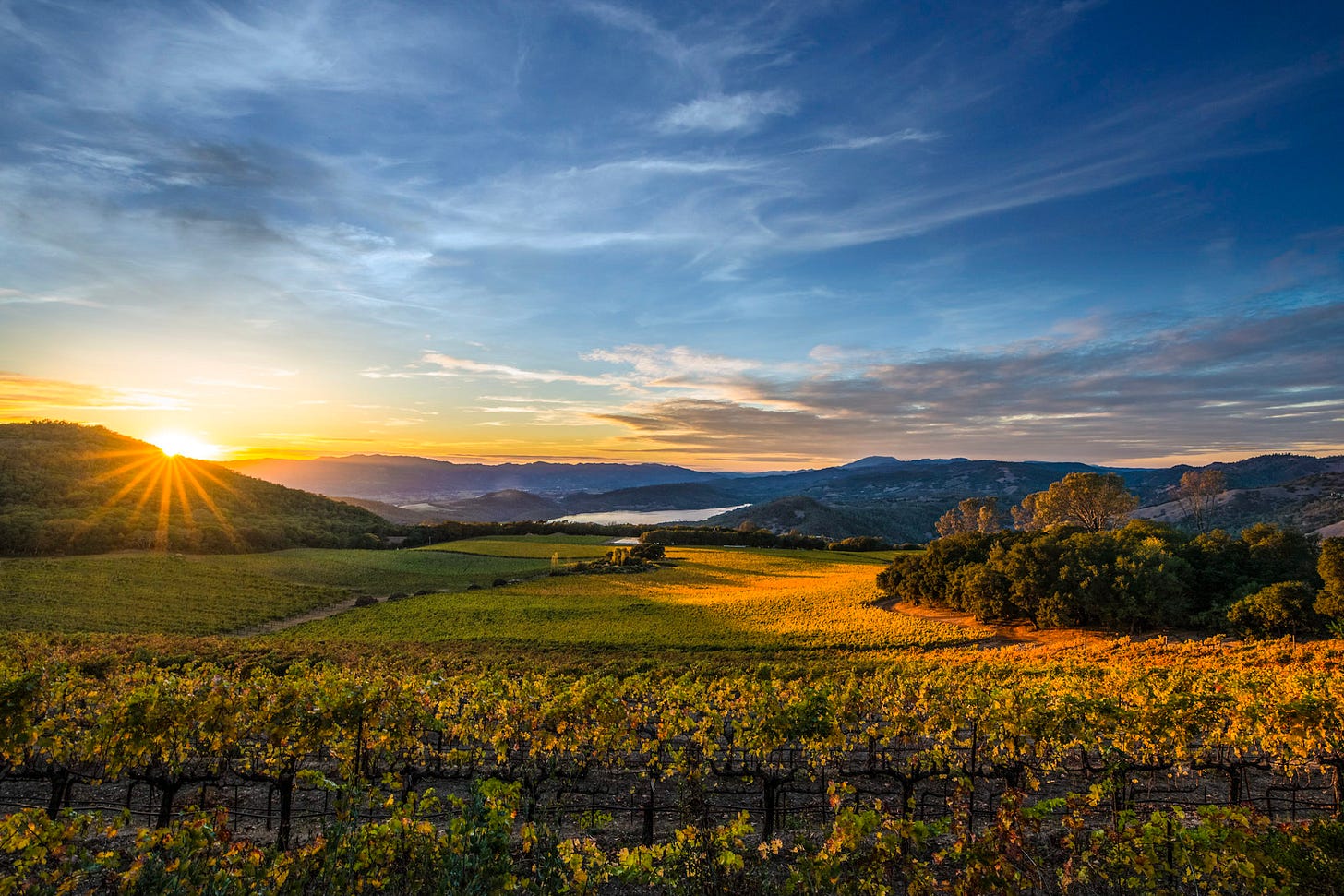Sunday E-dition: Media fracking — how to spot it, how to fix it
By Tim Carl
NAPA VALLEY, Calif. — A seismic shift is happening in the media landscape, both locally and globally. This change is partially due to demographic shifts as large segments of readers and advertisers leave print for online alternatives. But another dynamic is less understood. I call it “media fracking,” a phenomenon potentially as harmful to communities as fracking in the oil and gas industries.
Fracking in the oil and gas sectors involves pumping highly pressurized water, salt and chemicals into abandoned or low-producing wells to extract remaining fossil fuel reserves. While effective, the practice is controversial, often resulting in contaminated groundwater, increased harmful gas emissions and in extreme cases the abandonment of entire communities. Once these wells are exhausted, the benefiting companies frequently move on, leaving the costly environmental cleanup to governmental agencies. Supporters point to increased profits, short-term job creation and American energy independence.
Media fracking operates similarly. Publishing companies (typically non-local based) mine value from a community in ways that ultimately cause harm, extracting value without reciprocal contributions. This exploitation of local information sources can lead ultimately to the closure or sale of these institutions, all of which can result in decreased civic engagement, increased political corruption, and a rise in feelings of isolation and anxiety among community members. Some studies have even shown increased healthcare costs when local news is compromised.
Companies engaging in media fracking are primarily driven by the lucrative advertising industry, although extracting value from subscribers is also present. They often capitalize on community anxiety and disengagement to generate profits rather than prioritize locally sourced information. In the most flagrant instances, these companies have dismissed all, or nearly all, local reporters, resorting to using AI or corporate-generated content disguised as local news. While such practices degrade the local community, they simultaneously enhance the company's online presence and profitability, leaving behind "news deserts" and fostering a climate of mistrust.
To counteract the damage inflicted by media fracking, a movement toward locally owned, subscription-based media outlets such as Napa Valley Features has begun. These alternative outlets sustain themselves not through advertising revenues but through serving their subscribers.
Media fracking checklist
Here's a list to help you determine if your local publisher employs a media-fracking strategy.
Subscription prices increase while there are increasing gaps between print editions or they cease print production entirely.
The company perpetuates a narrative that the business is struggling, even when it is profitable.
It purports to be “community-oriented” while clearly prioritizing profits over service.
Gaslighting is present: Local management denies responsibility, blaming a distant, unapproachable corporation for any negatively perceived changes, job cuts, etc.
There is a lack of accountability or transparency in their decision-making processes.
They replace experienced staff with less-experienced cheaper labor, often firing staff with little or no notice and little or no severance.
They operate under a corporate strategy with little regard for the specific needs and characteristics of the local community.
Canceling subscriptions is made difficult.
The quality and quantity of investigative journalism declines.
Public-facing offices are closed.
Home delivery is ended or made inconvenient.
They don't communicate long-term strategy or vision with the community.
They transition from original local content to syndicated or pooled content.
The parent company promotes cost cuts as a value indicator to Wall Street investors.
They claim a desire to “rescue” or “save” local publications — or other “white-knight syndrome” behaviors — and report that more money is the key hurdle.
There is increasingly aggressive and invasive online advertising (annoying pop-ups and ads for non-local companies).
Company management receives bonuses and raises while local staff is being eliminated.
Bullying behavior is evident: They attempt to control community conversations to favor their narrative.
They reduce collaboration and eliminate local freelance contributions.
The only way to combat media-fracking companies is to support the alternatives. We ask that anyone reading this subscribe to Napa Valley Features and share our content with anyone who might value our mission to provide local-only content in an ad-free environment presented in a professional and aesthetically pleasing manner, as demonstrated in our stories from the past week.
Last week
Dave Stoneberg shared an interview with longtime St. Helena resident Sue Cottrell and her book club members about their reading habits, experiences and favorite books. A new contributor, Antonia Allegra, gave us a backgrounder on Broadway and Vine, a nonprofit established by Broadway producer and Tony award nominee Jacob Langfelder.
We learned about Crush MS, a grassroots organization co-founded by Kevin Reid of Reid Family Vineyards and Counter Punch Wines, and its annual fundraising event last weekend in Napa, contributing to the fight against multiple sclerosis. Since its inception in 2014, the nonprofit has donated over $600,000 toward MS research, including significant contributions to a Stanford University study that linked the Epstein-Barr virus to MS. The success, recognized by U.S. Rep. Mike Thompson, was a reason for celebration.
Eduardo Dingler discussed how downtown Napa has transformed over the past two decades, evolving into a vibrant scene that attracts locals and tourists alike with its restaurants, wine bars and an influx of wineries setting up in the heart of the city.
We also featured a list of must-attend weekend events in our new “The Napa Valley Weekender” column, learned about “ugly duckling” orchids and reminisced with Stoneberg about his tenure in the newspaper industry.
Next week
Next week expect more local content that you won't find elsewhere. We'll learn about the recent Napa Valley Writers’ Conference, about the temporary slowing of demand for water-witching, and a new business that opened in Napa that has become a go-to spot for excellent coffee, snacks, “green” wine and a place to hang out with free WiFi.
Onward.
Tim Carl is a Napa Valley based photojournalist.







This article and alert of media fracking so much defines for me how much I admire every article featured in Napa Valley Features. Tim Carl, you are a hero to this Valley and her communities.
I witnessed first hand as a large corporate news holding swallowed up a small, locally built newspaper in the Pacific Northwest. Media fracking is alive and well across the country. Thank you for taking the reigns and creating this gem of local news reporting! You are delivering!